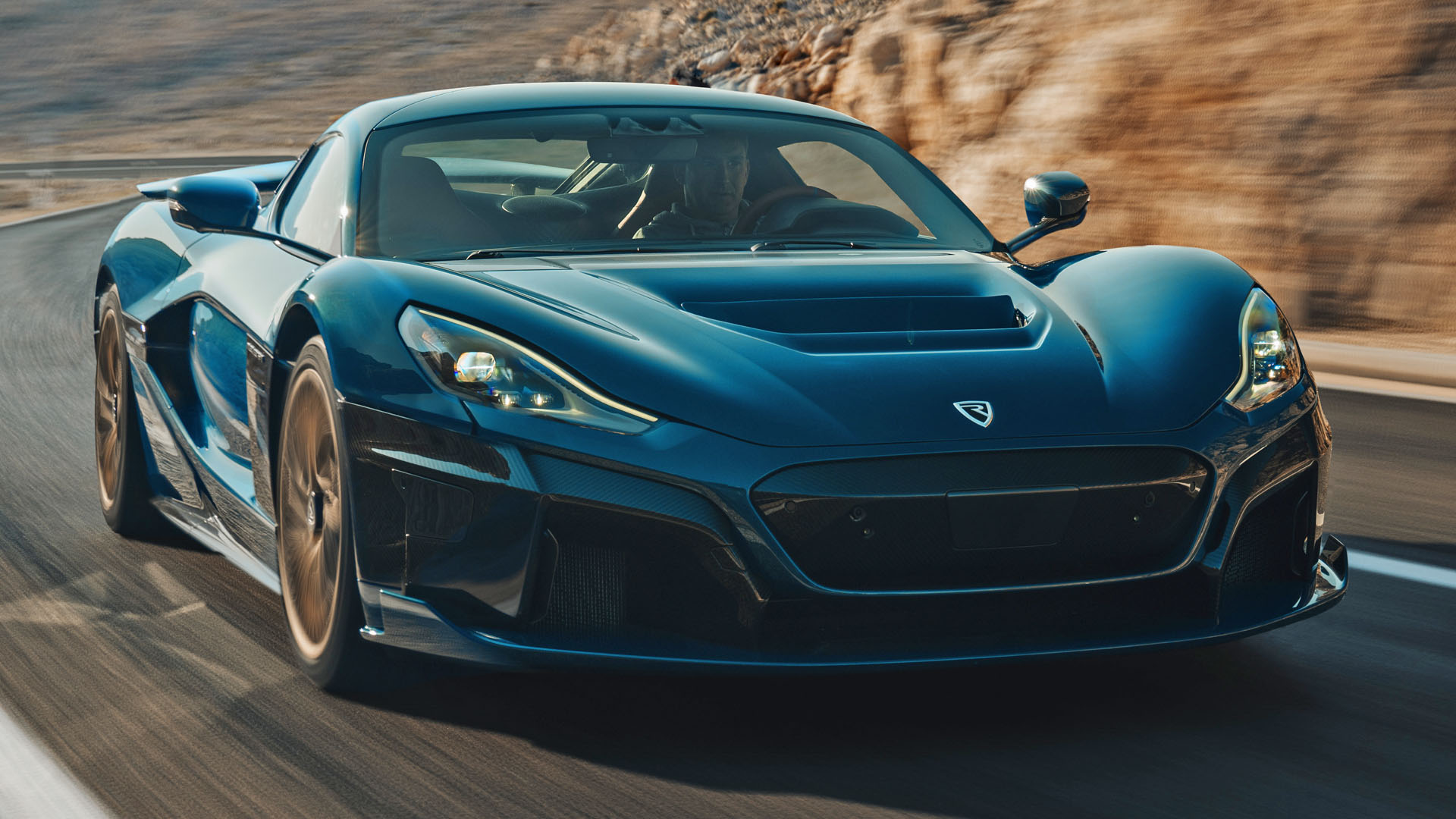

Rimac formally unveiled the production version of its C_Two electric hypercar to the general public. Named after a powerful Croatian storm, it’s called the Nevera. The numbers are, and in a nutshell, they’re huge. Horsepower is nearly 2,000 at a mind-boggling 1,914 ponies. Likewise, the car will hit 60 mph in just 1.85 seconds, all while getting 340 miles of range and charging from zero to 80 percent in just 19 minutes.
Those aren’t the only impressive numbers from Rimac, however. We haven’t even talked about the price. At 2 million Euros, the Rimac would cost any interested American buyer nearly $2.5 million. And there’s a catch, as well: Just 150 Neveras will be built.

Really, it’s best to just get all of these insane acceleration numbers out of the way first. As well as reaching 60 mph in 1.85 seconds, Rimac claims it will hit 100 mph in just 4.3. Also impressive is the car’s quarter-mile time of just 8.6 seconds. A trap speed for that run wasn’t provided, although it’s worth noting the car will do 186 mph (300 km/h) from a dead stop in just 9.6 seconds.
All of this is thanks to the car’s four-motor electric drivetrain, which puts the power to the ground thanks to an H-shaped 120kWh battery. This battery pack contains 6,960 individual cells and is a structural member of the chassis as well, lending 37 percent additional stiffness to the car’s carbon fiber chassis.




The carbon-fiber structure of the car consists of 2,200 individual plies and 222 aluminum inserts. At 441 pounds, it’s extremely light as well. That allows the Rimac to offset as much battery weight as possible. Despite this impressive lightweight shell—Rimac claims it’s “the most rigid structure of any car ever made”—the Croatian company stating on its website that the hypercar weighs an immense 4,740 pounds or 2,150 kg.
That doesn’t mean the Nevera is inefficient, though. Far from it. The motors that power the car are 97 percent efficient, meaning almost all of the energy in the pack is used to move the car along. That’s opposed to a combustion engine where even the most efficient, exotic powerplants found in Formula 1 cars struggle to achieve 50% efficiency.
The Nevera’s aerodynamics have also been optimized to provide downforce when necessary, and charge-saving streamlining when you’re trying to get those last few miles of range. Drag has been reduced 34 percent versus the car’s earlier prototypes, and the car’s rear diffuser, hood profile, and rear wing are all active and controlled independently. That means a drag reduction of 17.5 percent in high downforce mode versus streamline mode and a relatively low drag coefficient of just 0.30.




These aerodynamics and other vehicle systems are adjusted via two massive rotary dials in the interior. The driver can adjust the front/rear motor torque split on the fly, as well as select between seven different drive modes, five of which are preset by Rimac and two that can be customized by the driver. Sport, Drift, Comfort, Range, and Track are the settings pre-programmed by the company.
Another interesting component of the car’s systems is the AI-enabled “Driver Coach.” Set to be released in 2022 via an over-the-air update, the system uses artificial intelligence to coach the driver with audio and visual guidance around specific racetracks, giving them advice if they need to brake earlier, accelerate harder, or find a better line through a corner. It does this with the help of a mind-boggling amount of technology. There are 13 separate cameras fitted to the vehicle, as well as a dozen ultrasonic sensors and six radars.
Also onboard is a plethora of clever software, like Rimac’s new “R-AWTV 2” (Rimac’s All-Wheel Torque Vectoring 2) system. The long acronym is a complicated way of saying traction control, stability control, and torque vectoring are all crammed into one program. It allows the car to manage its traction and stay planted during complex maneuvers, adjusting itself 100 times per second and using the car’s advanced electro-hydraulic braking system for assistance as well.




The Nevera’s braking system is claimed to seamlessly combine the vehicle’s regenerative braking and conventional disc brakes in order to manage heat between the systems. If the batteries get too hot, the car will automatically place more load onto the regular brakes, doing the opposite if the regular brakes begin to amass too much heat. The braking system was developed in cooperation with Brembo, meaning six-piston calipers and 390 mm carbon-ceramic rotors at every corner.
Both the braking and R-AWTV 2 systems work together with the vehicle’s electronically controlled double wishbone suspension to adjust for any situation, meaning the Nevera can transform from a track monster into a more conventional grand tourer if the situation demands it. For nearly $2.5 million, it’s a nice thought that this 2,000-horsepower EV can at least be a little versatile.
With just 150 units going up for sale globally, the Neveras that find their lucky buyers are going to be spread pretty thin all over the world. Each is set to be signed personally by the company’s founder, Mate Rimac, before the vehicle is delivered. The customer will be able to choose from a number of different trims and specs to ensure their vehicle is unique as well. If you’re curious when you can hope to see one rolling down your street, deliveries are set to begin this year.
Got a tip or question for the author? You can reach them here: peter@thedrive.com